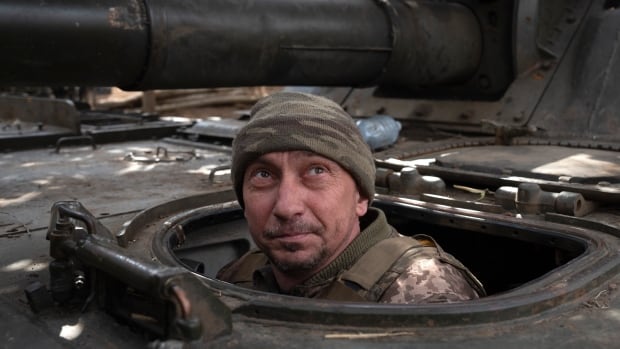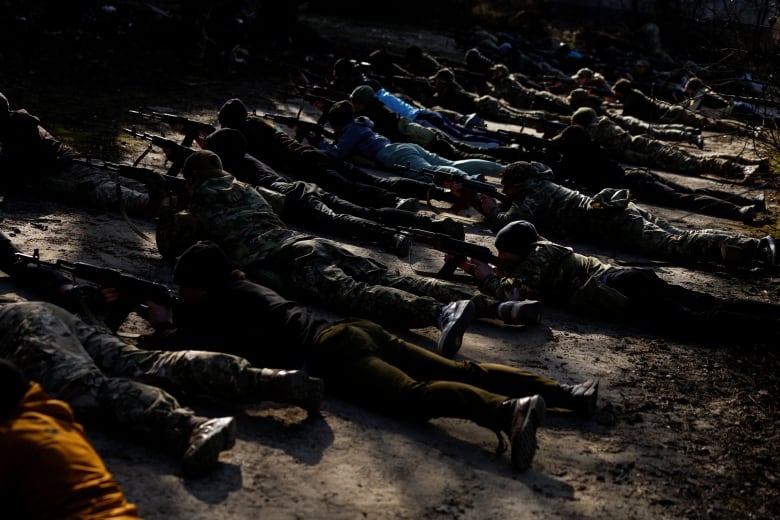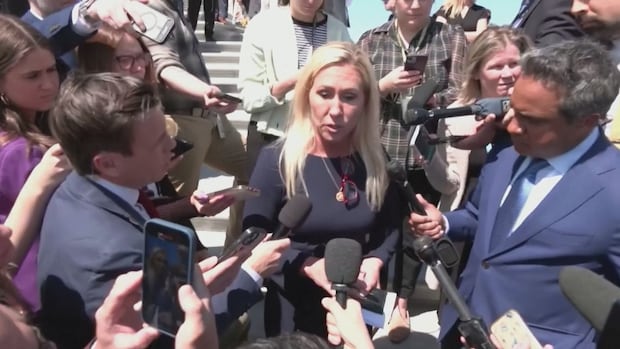
When U.S President Joe Biden signed into law an aid package that included $61 billion US for Ukraine’s fight against Russia, his national security adviser acknowledged that, while the funds would make a difference, “there is no silver bullet in this conflict.”
Jake Sullivan also cautioned that it will “take some time for us to dig out of the hole that was created by six months of delay.”
Still, Sullivan said the funding will improve Kyiv’s position and that the administration believes “Ukraine can and will win.”
The aid package, delayed for months by congressional wrangling, will certainly help repel Russia’s invasion, which has lasted over two years.
It’s “enough to stabilize the front lines,” Mark Cancian, a retired U.S. marine colonel and expert on defence logistics at the Center for Strategic and International Studies, told Vox in a recent interview.
“You’ll see almost an immediate battlefield impact.”
Ukrainian MP Oleksandra Ustinova says expected U.S. aid will help her country hold its front line against Russia, but more is still needed. Ustinova joins CBC’s chief political correspondent Rosemary Barton to talk about her visit to Canada and what Ukraine is asking for.
But the aid also raises questions as to how significant it will be in providing ultimate victory for Ukraine.
“OK, you’ve stabilized the front. Now what? The Ukrainians have to answer that question. What is their theory of victory?” he said.
Joe Buccino, a research analyst at the Defense Innovation Board and a former communications director at U.S. Central Command, wrote in February that he saw no path for Ukraine to win and that the aid package “will not significantly change the future.”
“This fight is a long haul one that will require additional aid. The spigot will close at some point — perhaps soon — turning off aid and sealing Ukraine’s fate,” he wrote in The Hill.
More recently, one U.S. senator suggested the aid was a waste of money because the administration “has no viable plan” for a Ukrainian victory.
Biden had “failed to articulate even basic facts about what Ukraine needs and how this aid will change the reality on the ground,” Sen. J.D. Vance wrote in an op-ed for The New York Times.
“This $60 billion is a fraction of what it would take to turn the tide,” wrote the Ohio Republican, who voted against the package. He added that the U.S. lacked the capacity to manufacture the amount of weapons Ukraine would need to win.
There has been at least one report that even the Biden administration doesn’t like Ukraine’s odds.
But certainly, for the short term, the influx of weapons should improve Kyiv’s chances of averting a major Russian breakthrough in the east, analysts say.
Matthew Savill, director of military sciences at the Royal United Services Institute, a think-tank, said Ukraine’s immediate priority would likely be artillery — both ammunition and the guns — as well as air defence systems and missiles to replenish stocks depleted by recent Russian airstrikes.
That stands to improve the balance “between Russian and Ukrainian forces this year and into next year,” Savill told CBC News.
“In essence, this this is largely a defensive package.”
With it, the Ukrainians need to “blunt Russian attacks” this year, he said, compelling them to “make enormous expenditure for relatively little gain.”
With broad bipartisan support, the U.S. House of Representatives on Saturday passed a $95-billion US legislative package providing security assistance to Ukraine, Israel and Taiwan over bitter objections from Republican hardliners. Republican Rep. Marjorie Taylor Greene told reporters afterward that House Speaker Mike Johnson was a ‘lame duck,’ while Democrat Rep. Jared Moskowitz praised Johnson, saying ‘the Speaker rose to the occasion.’
The bigger challenge, he said, is that Ukrainians have to prepare for operations in 2025 and will need to train or retrain people to create a proper combined arms force that can launch an assault.
Still, Savill says the medium- to long-term outlook favours the Ukrainians because the potential capacity of Europe and the U.S. to supply them is greater than Russia’s resources.
“The trends at the moment are intersecting at a point where they’re bad for Ukraine and good for Russia,” he said.
Alexander Motyl is more optimistic. A professor of political science at Rutgers University-Newark, and a specialist on Ukraine and Russia, Motyl predicts the aid will not only help Ukraine hold the front, but perhaps push back the Russians — putting Kyiv in a much better position if there is eventually any negotiation with the Kremlin.
“[Ukraine would] get itself into the position of negotiating from strength, and not from a position of imminent annihilation,” he wrote for The Hill.
And there’s something in this for the Americans too — that $61 billion US is less than seven per cent of the country’s massive defence budget, and represents an excellent return on investment for its taxpayers, according to James Stavridis, former supreme allied commander of NATO.
“Nearly all of the money will be spent back in the U.S., providing jobs and helping the economy, and it will help decimate the military capability of an aggressive dictator without putting a single U.S. service member at risk,” he wrote in Bloomberg.



